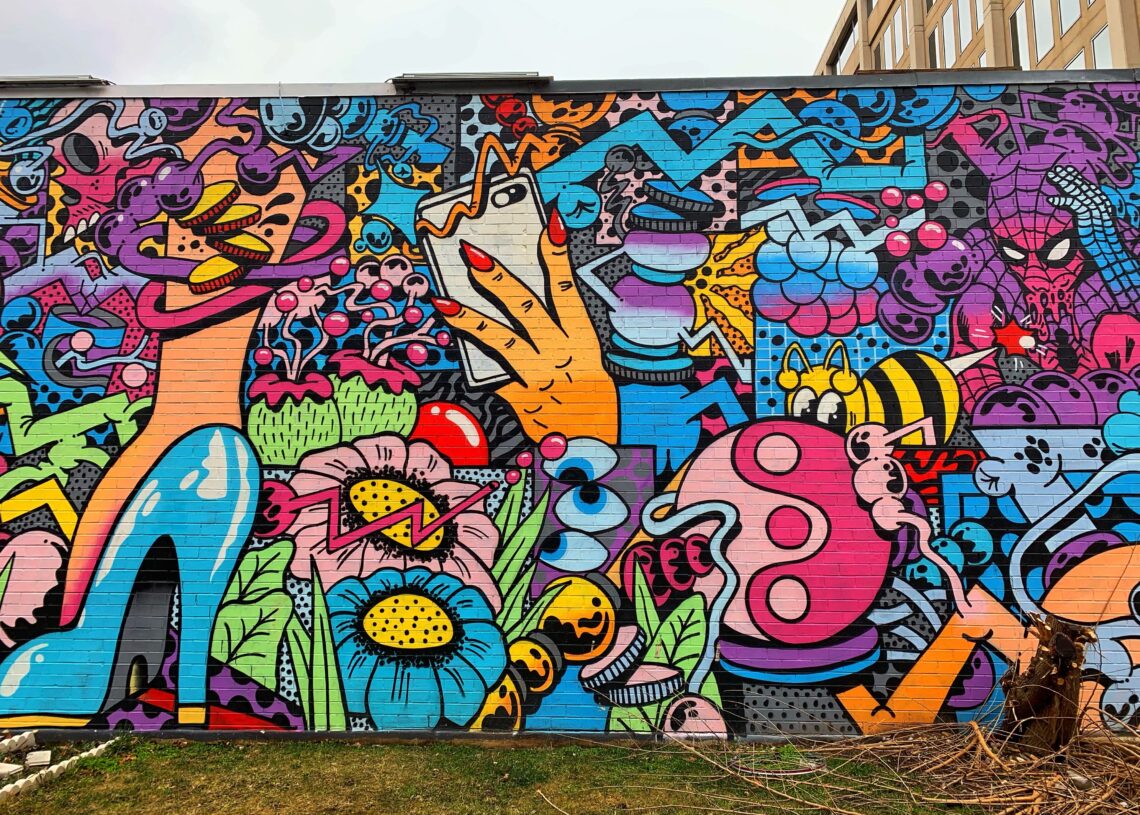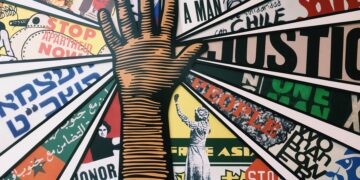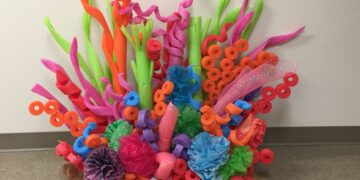Graffiti: The Enduring Voice of the Marginalized
Often emerging from the fringes of society, graffiti serves as a potent visual statement. It’s a means of gaining visibility and recognition in spaces where certain voices are frequently ignored. Despite persistent attempts to erase it, this art form continues to flourish.
The Persistence of Graffiti as a Form of Expression
The enduring presence of graffiti underscores its crucial role as a medium for those who feel excluded or overlooked. Its continued existence highlights the ongoing conflict between those who view it as vandalism and others who recognize it as a reflection of community struggles. Graffiti’s accessibility and raw power make it a compelling form of social commentary, capable of capturing attention and provoking thought.
In many urban centers, graffiti has become an integral part of the cityscape, a testament to its resilience and relevance. Artists use walls, bridges, and even abandoned buildings as canvases to express their thoughts, feelings, and experiences. This form of expression is not limited by formal training or access to traditional art spaces, making it a democratic and inclusive medium for anyone with a message to share.
The Ongoing Debate Surrounding Graffiti
The debate over graffiti is likely to continue as long as there are those who feel marginalized and those who seek to control the urban landscape. However, by understanding the complex social, economic, and artistic dimensions of graffiti, we can begin to move beyond simplistic judgments and engage in a more nuanced dialogue about its role in our society.
Murals: Transforming Urban Spaces into Cultural Hubs
Murals are increasingly recognized for their transformative power in redefining urban spaces. They not only enhance visual appeal but also foster community engagement and stimulate economic activity, turning ordinary cityscapes into vibrant cultural canvases. This trend reflects a growing appreciation for the role of public art in shaping more inclusive and dynamic urban environments.
The Impact of Murals on Foot Traffic and Social Connection
Public art, particularly murals, acts as a catalyst for walkability and social connection in urban areas. Murals draw people into areas, encouraging exploration and interaction, making them more likely to linger and engage with their surroundings. The visual appeal of these artworks contributes significantly to the vitality of urban spaces, creating a more welcoming and engaging environment for residents and visitors alike.
The increase in foot traffic generated by murals can have a positive impact on local businesses, as people are more likely to shop, dine, and explore in areas that are visually appealing and pedestrian-friendly. This can lead to increased revenue, job creation, and a stronger local economy.
Cincinnati’s Mural Renaissance: A Case Study
Cincinnati stands out as a national leader with a significant number of murals, showcasing the transformative power of public art. A university study highlights how murals can boost vitality and community development in cities. The city’s historic district, in particular, demonstrates the positive impact of public art on the urban environment.
| City | Number of Murals | Notable District | Foot Traffic Increase (2024) |
|---|---|---|---|
| Cincinnati | 300+ | One historic district: 55+ | Higher foot traffic reported |
Data source: University of Cincinnati, as cited in the international urban design journal Cities July 2025
This data underscores the transformative potential of murals in revitalizing urban areas and fostering community engagement. The concentration of murals in Cincinnati’s historic district serves as a testament to the power of public art in attracting visitors and enhancing the overall vibrancy of the city.
Women in Street Art: Redefining Urban Aesthetics
Street art, a dynamic and ever-evolving form of expression, is witnessing a significant shift as the pivotal role women play in shaping urban aesthetics and challenging traditional norms is increasingly acknowledged. This recognition marks a significant step towards greater inclusivity and diversity in the art world, as women artists bring their unique perspectives and experiences to the forefront.
Recognizing the Contributions of Female Artists
Recent analyses highlight a growing recognition of women street artists within the art market, signaling a shift towards greater inclusivity and diversity. Their increasing presence enriches the diversity and broadens visual narratives, challenging long-standing gender stereotypes in urban art. This progress signals an acknowledgment of the crucial role female artists play in visual revolutions in public spaces.
The rise of women in street art can be attributed to several factors. First, there is a growing awareness of the historical underrepresentation of women in the art world, leading to a conscious effort to promote and support female artists. Second, there is a growing demand for diverse perspectives and voices in public art, as communities seek to reflect the richness and complexity of their populations. Third, there is a growing number of talented and dedicated women artists who are breaking down barriers and creating impactful works of art in public spaces.
Overcoming Challenges and Inspiring Future Generations
Despite the progress that has been made, women in street art still face historical underrepresentation and ongoing challenges. However, their contributions are vital in expanding the public’s perception of who shapes urban art spaces. Their impact is undeniable, driving visual revolutions and inspiring future generations of artists and activists.
One of the main challenges that women street artists face is the lack of representation in galleries, museums, and other art institutions. This can make it difficult for them to gain exposure and recognition for their work.
Street Art as a Catalyst for Social Change
Street art is increasingly becoming a powerful voice for the voiceless, transforming urban landscapes into vibrant platforms for social commentary. It serves as a powerful tool to spark dialogue, challenge norms, and inspire collective action, making it an essential medium for activism in the 21st century.
Amplifying Marginalized Voices Through Public Art
Following pivotal events, street art has emerged as a powerful tool for social justice movements, providing a platform for marginalized voices to be heard. Collectives rapidly mobilized hundreds of muralists to transform areas with artworks addressing racial injustice, police brutality, and community healing. These projects often involve collaboration between artists, local businesses, and activists, reclaiming public space for marginalized voices and fostering a sense of community solidarity.
The power of street art to amplify marginalized voices lies in its accessibility and visibility. Unlike traditional art forms that are often confined to galleries and museums, street art is readily available to the public, reaching a wide audience and sparking conversations among people from all walks of life.
Street Art and Community Engagement
Artists are blending street art with performance to uplift immigrant communities, creating a powerful synergy between visual expression and community engagement. Through murals and large-scale puppet rallies, they engage volunteers and raise awareness about the challenges and contributions of immigrant communities. These efforts are not only aesthetic interventions but also catalysts sparking dialogue about equity in urban spaces, promoting a more inclusive and welcoming environment for all.
The use of performance in conjunction with street art can enhance its impact and reach, creating a more immersive and engaging experience for audiences. Puppet rallies, for example, can bring attention to important social issues in a playful and accessible way, attracting people who might not otherwise be interested in political activism.
Street Art: A Reflection of Society’s Soul
Street art, often misunderstood and sometimes dismissed as mere vandalism, has evolved into a powerful medium reflecting our society’s deepest values and concerns. More than mere decoration, it serves as a vibrant channel for community expression, mirroring identity, resilience, and activism in urban spaces, offering a unique and unfiltered glimpse into the soul of our society.
Street Art as a Mirror to Community Expression
Street art is increasingly recognized as a vital form of community expression and social commentary, providing a platform for marginalized voices to be heard and for diverse perspectives to be shared. Dynamic public art scenes thrive in cities around the world, showcasing community identity, resilience, and activism. Large-scale murals celebrate local history, honor cultural traditions, and address important social issues, creating a sense of place and belonging for residents.
The power of street art to reflect community expression lies in its accessibility and authenticity. Unlike traditional art forms that are often confined to galleries and museums, street art is readily available to the public, reaching a wide audience and sparking conversations among people from all walks of life.
The Evolving Urban Landscape
Urban spaces are transforming into living galleries where the public engages with art in real-time, blurring the lines between art and life. Augmented reality integration enhances the experience, pushing creative boundaries and creating new possibilities for artistic expression. This evolution marks a significant shift in how we perceive and interact with art in our daily lives, as art becomes more integrated into the fabric of our cities.
The integration of augmented reality into street art allows artists to create interactive and immersive experiences for viewers, enhancing the impact and reach of their messages. Viewers can use their smartphones or tablets to scan murals and unlock hidden layers of meaning, access additional information, or even interact with the artwork in real-time.
Q&A
Question 1: What is street art, and how does it utilize both graffiti and murals to express social commentary and self-expression?
Answer: Street art encompasses both the rebellious spirit of graffiti and the poignant messages of murals, transforming public spaces into vibrant canvases. It serves as a powerful and accessible medium reflecting diverse perspectives and challenging societal norms, offering a voice to those often unheard.
Question 2: What are the main methods used to remove graffiti, and what are the associated costs? Provide examples from the provided data.
Answer: Graffiti removal methods range from traditional manual painting to innovative technologies like spray drones. The choice depends on location and scale. The Washington State Department of Transportation’s data shows significant expenditure: manual painting cost $69,640 in Tacoma-Seattle and $6,870 in North Spokane, while statewide drone technology cost $21,543. Planned expenditures are even higher, reflecting the ongoing battle against graffiti.
Question 3: How do murals contribute to urban revitalization and community engagement, and what are potential challenges associated with their implementation?
Answer: Murals enhance urban spaces visually, boost foot traffic, and foster community engagement. Cincinnati, for example, has seen increased foot traffic in areas with numerous murals. However, the revitalization spurred by public art can lead to rising property values and potential displacement of residents, requiring balanced strategies to ensure equitable benefits.
Question 4: What progress has been made in recognizing and including women in the street art world, and what challenges remain?
Answer: The art market is showing increased interest in women street artists; the percentage of women among the top 100 most inquired street artists in the US market rose from 11% to 13% between 2023 and 2024. However, historical underrepresentation and ongoing challenges persist, highlighting the need for continued efforts to ensure equitable representation and opportunity.
Question 5: How is street art being used as a tool for social justice and activism, and what types of social issues are addressed through this medium?
Answer: Street art serves as a powerful voice for social justice movements, addressing issues like racial injustice, police brutality, and community healing. Artists use murals and performances to amplify community narratives, particularly for marginalized groups. Themes addressed include homelessness, gentrification, cultural identity, environmental justice, and border politics, showcasing its role in sparking dialogue and inspiring collective action.







